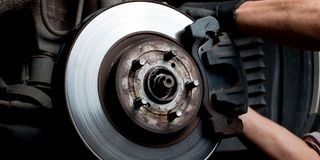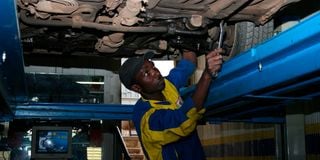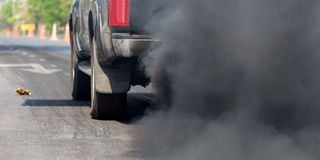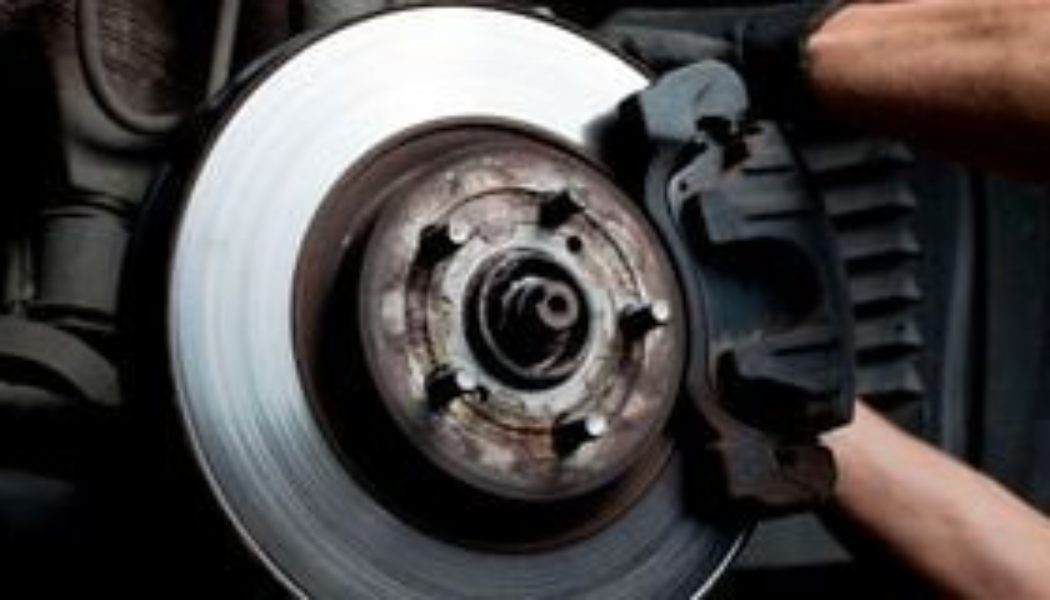Can money be saved by extending service intervals? What are the most likely downsides of doing so? –Paul
If you think you can save a few shillings by delaying service or repair to your car, think again.
Almost without exception, every kilometre of delay will increase the cost of your motoring.
Ignoring or delaying repair to an incipient fault can increase the cost of a final fix tenfold!
Here are some examples:
Brake pads

Brake pad repair.
Photo credit: Shutterstock
Symptom: Grating noise when applying brakes.
Fault: Trapped grit or stone, or friction materials worn out.
Cause: Dirt or extended usage
Prevention: Regular service checks and timely replacement
Early Remedy: Cleaning and adjustment, new pads. Modest costs.
Late Remedy: More rapid wear/damage to pads and likely scoring of the brake discs at a much higher cost. Also risk element of brake failure.
Wheel balance
Symptom: Steering shudders at certain speeds.
Fault: Wheels out of balance. If very severe, possible bent wheel rim
Cause: Puncture repair, tyre wear or hitting stones or potholes.
Prevention: Skillful and careful driving reduces the incidence and/or severity.
Early Remedy: Have wheels properly balanced at a minor cost.
Late Remedy: Discomfort of shudder and effects of vibration on every part of car. Excessive tyre, steering and suspension wear. Some loss of handling integrity and running economy. Possible long-term cost of thousands of shillings.
Wheel alignment

Correcting a wheel (steering) alignment early prevents stress on the steering system and wheel bearings. It only takes a few minutes at little cost.
Photo credit: File | Nation Media Group
Symptom: Uneven tread wear on one or more tyres, steering pulls to one side
Fault: Wheels out of alignment, incorrect tyre pressure, or binding brakes.
Cause: Driving on rough roads, potholes, or clipping edge of pavement can put wheels out of alignment.
Prevention: Careful driving and regular check on brakes and tyre pressures.
Early Remedy: Have wheel (steering) alignment rectified. Takes a few minutes at minor cost.
Late Remedy: Tyre will be worn out very quickly, so cost of new tyre. Car will not run freely so increased fuel consumption. Extra strain on steering system and wheel bearings, so extra wear and premature cost of replacement. Car will pull to one side and handling will not be perfect, so loss of safety.
Knocking noise in wheel arch
Symptom: Knocking noise from wheel arch on bumpy surfaces; car jittery on rough surfaces, tendency to wallow.
Fault: Worn shock-absorber or shock bushes; broken mounting.
Cause: Long-term wear and tear or severe road impact. Overloading. Suspension rating too soft.
Prevention: Gentle driving or action before wear is excessive
Early Remedy: Replace bushes or whole shock absorber. Fitting takes half-an-hour. Cost of bushes a few hundred shillings. Cost of shock absorber several thousand shillings.
Late Remedy: Death. A faulty shock can break itself and cause sudden loss of control. Meanwhile, extra strain on suspension, body and tyres, possibly causing consequent damage to other parts. Increased fuel consumption owing to wasted energy of “bouncing” wheel.
Screech when starting
Symptom: Screeching noise when car starts or during fierce acceleration.
Fault: Loose fanbelt.
Cause: Usage, loose adjustment nut, broken tensioner bearing.
Early Remedy: Tighten fanbelt. Takes two minutes, costs nothing.
Late Remedy: At worst, belt will slip, wear out and break. Considerable inconvenience even if noticed immediately. If not promptly noticed, possible complete destruction of engine by overheating. Cost? Either sickening or crippling, depending on where you are when your break down, and whether you are a multi-millionaire or just an ordinary millionaire.
Stiff gear change
Symptom: Gear change a bit stiff.
Fault: Gearbox oil level too low or oil too old. Clutch condition or adjustment. Defects in gear linkages.
Cause: Usage and/or neglect, and possible leak.
Prevention: Regular service check, and immediate check if underbody strikes road surface.
Early Remedy: Top up or replace gearbox oil. Takes a few minutes, costs a few hundred shillings. Repair leaks. Monitor clutch pedal travel and feel.
Late Remedy: Considerably increased wear on gearbox, possibly even total seizure of gears causing total breakdown and considerable expense.
Exhaust colour black

Early adjustment of the carburettor, cleaning or replacement of the air filter will prevent the engine from choking up and costing you money.
Photo credit: Shutterstock
Symptom: (Petrol engines only) Colour inside exhaust tailpipe is black.
Fault: Fuel mixture too rich, incomplete combustion generates soot.
Cause: Poorly tuned carburettor and/or ignition timing; choked air cleaner element.
Prevention: Regular service check.
Early Remedy: Adjustment of carburettor and/or timing. Cleaning or replacing air filter. Costs less than extra fuel consumed.
Late Remedy: Considerably increased fuel consumption, faster rate of engine wear, possible coking up of engine causing pre-ignition. Constant unnecessary expense.
Exhaust colour very light grey
Symptom: (Petrol engines only) Colour of exhaust tailpipe very, very light grey.
Fault: Unless immediately after 10 laps of Grand Prix circuit, fuel mixture too lean and/or ignition timing excessively advanced. Insufficient back pressure on exhaust will have similar effect, but as this is caused by broken exhaust manifold or similar, the symptom will be extremely loud engine noise.
Cause: (of lean mixture or advanced timing) poor tuning.
Prevention: Regular service check.
Early Remedy: Correct adjustment, quick and cheap.
Late Remedy: Exhaust gas temperature very high, causing rapid wear of exhaust valves and other engine parts. Possible overheating. Car difficult to start. Possible consequent damage of tens of thousands of shillings.
Battery failure
Symptom: Flat battery.
Fault: (Most Probably) Battery fluid level too low, preventing charge. There are many other possible reasons, but this is the first and most common. Others include alternator or regulator fault, defect in electrical connections, or physical damage to inner battery plates (e.g. bracket not holding battery box still or overheating through prolonged starting).
Cause: Neglect of electrolyte level or physical shock to battery box.
Prevention: Regular service check
Early Remedy: Top up with distilled water and recharge. A few shillings.
Late Remedy: Ruination of battery. Replacement cost and inconvenience of breakdown.
Scratched paint
Symptom: Scratch on paintwork
Fault: Some other idiots!
Cause: Some other idiot’s front bumper.
Prevention: Don’t drive in Kenya.
Early Remedy: Small scratch can be touched up for a few shillings. Larger damage might require panel-beating and/or filling and respray. Cost can be quite high if done properly.
Late Remedy: (Especially at Coast and other high humidity areas). Exposed metal corrodes and rust spreads under paintwork. Much larger repair bill later (possible replacement of whole panel) and/or reduction in car’s resale value by tens of thousands of shillings.
Other common defects
Symptom: Nothing obvious.
Fault: Tear in grease boot of half-shaft or steering rack.
Cause: Old age or flying stone or twig
Prevention: Drive more carefully and check regularly. If motoring in severe conditions often, protect grease boot with second layer of flexible covering (e.g. canvas or plastic bag).
Early Remedy: Replace torn rubber boot. Costs a few hundred shillings.
Late Remedy: Dirt gets into boot and wears drive shaft or steering part very rapidly. Later complete breakdown and replacement of parts for tens of thousands of shillings.
Other common defects
Symptom: Bank balance of zero
Fault: Excessive expenditure on car repairs
Cause: Clumsy driving and/or lack of regular service and checks.
Prevention: Service and check regularly.
Early Remedy: Fix faults as soon as they are spotted.
Late Remedy: Suffer breakdowns (and get physically mugged), pay enormous repair bills (and get economically mugged). Ultimately throw the car away, walk to work, expose children to danger on public transport, and accept the spouse’s divorce petition.









